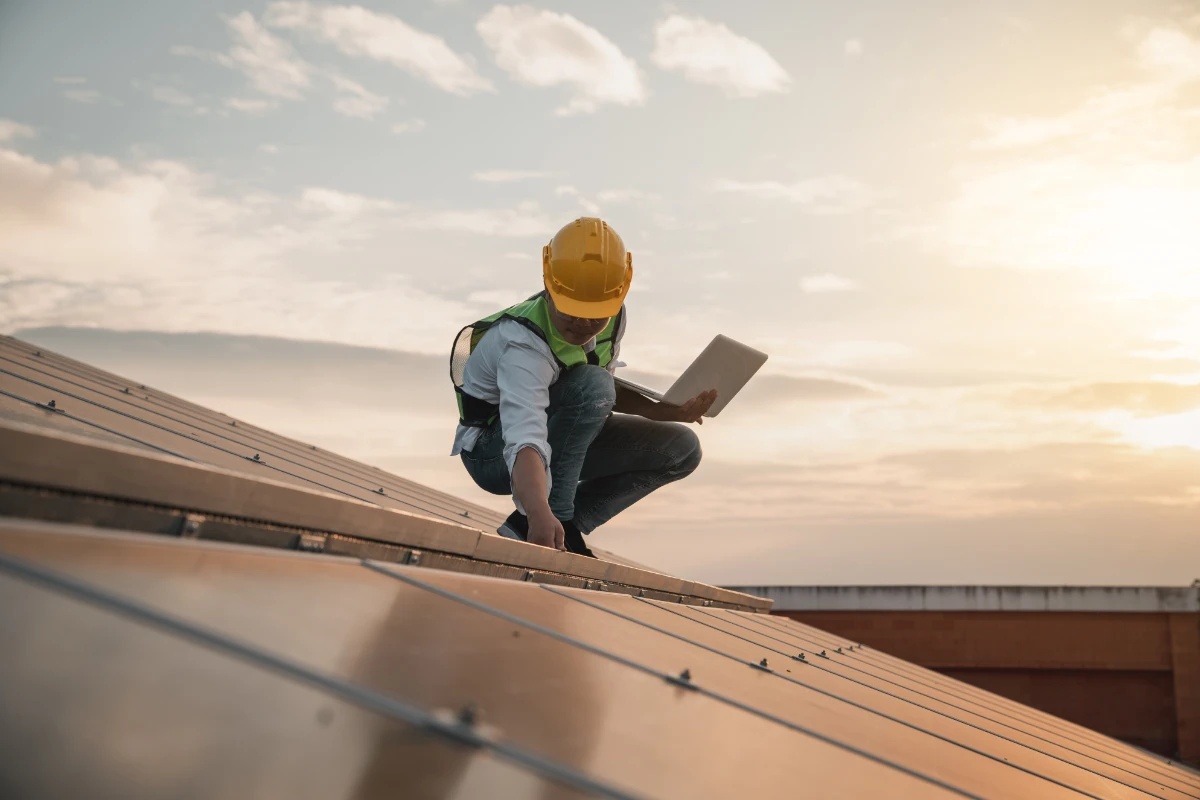Expert Care and Upkeep with Cleveland Heights Roof Maintenance Experts
Expert Care and Upkeep with Cleveland Heights Roof Maintenance Experts
Blog Article
A Comprehensive Overview to the Installment Refine of a Skylight Roofing
The setup of a skylight roof is a multifaceted process that calls for careful planning and execution to make certain optimum efficiency and aesthetic allure. This overview will describe the critical actions involved, from selecting the appropriate skylight type to the important tools and materials required for an effective installation. Recognizing the nuances of architectural honesty and waterproofing is paramount, as these factors straight affect the longevity of your skylight. As we explore each phase, it becomes clear that attention to detail is not just helpful but essential for accomplishing a smooth combination of natural light into your space.

Understanding Skylight Types
When thinking about a skylight installment, it is important to understand the numerous kinds readily available, each made to accomplish various visual and useful requirements. The most common kinds of skylights include fixed, vented, tubular, and operable models.
Fixed skylights are non-opening units that serve primarily to supply natural light and enhance interior areas. Northeast Ohio Roofing Contractors. They are perfect for locations where ventilation is not an issue. Vented skylights, on the various other hand, feature a device that permits them to open up, helping with air movement and lowering humidity levels. These are specifically useful in kitchen areas or restrooms.
Tubular skylights are portable and made to catch sunlight via a small dome on the roof covering, channeling it down a reflective tube into the home. This type works for smaller sized areas or spaces that need extra light without jeopardizing ceiling height. Operable skylights combine both natural light and air flow, making them versatile in various settings.
Each skylight kind offers one-of-a-kind benefits, and the selection depends upon factors such as the meant use the space, neighborhood climate, and building design. Hence, understanding these options is important for making an informed choice.
Planning For Setup
Selecting the appropriate sort of skylight is just the start; appropriate prep work for installment is crucial for making sure an effective task. Prior to starting the installment process, it is crucial to evaluate the architectural integrity of the roof where the skylight will certainly be set up. This includes monitoring for any indicators of damage, such as rot or leaks, which might compromise the installation and lead to future concerns.
Next, it is vital to plan the place of the skylight meticulously. Take into consideration variables such as sunlight exposure, possible blockages (like trees or neighboring structures), and the overall looks of the area. Noting the area clearly will aid in visualizing the result and help protect against mistakes throughout installment.
In addition, assessing neighborhood building codes and obtaining needed licenses is essential to ensure compliance with policies. This step will assist stay clear of possible penalties and make sure the security and legality of the setup.
Tools and Materials Needed
An effective skylight setup requires a details collection of materials and tools to guarantee precision and effectiveness throughout the procedure. Necessary tools consist of a measuring tape, level, circular saw, and utility knife, which are critical for exact measurements and reducing. A drill and suitable drill bits are needed for producing holes for placing brackets, while a hammer and nails or screws are required for safeguarding the skylight in position.
Along with tools, a number of materials are necessary for a correct installment. The skylight system itself must be chosen based upon the size and type appropriate for the roofing. Flashing sets, which are composed of steel pieces designed to stop water leakage, are vital for making certain a watertight seal. Full Report Roof cement and caulking are additionally required to offer extra waterproofing around the skylight edges.
Safety equipment, such as gloves, safety glasses, and a construction hat, ought to not be neglected to shield against possible threats during the setup. Tarps or go down fabrics can be useful to catch debris and secure the inside of the room below. Collectively, these tools and products lay the foundation for a successful skylight installation.
Step-by-Step Setup Process
Efficiently mounting a skylight involves a methodical approach that guarantees both capability and aesthetic appeals. Begin by marking the wanted location on the ceiling, guaranteeing it aligns with the structural elements of the roof covering. Next off, cut an opening that matches to the dimensions of the skylight frame, taking treatment to avoid any electric wiring or plumbing.
Once the opening is prepared, install flashing around the boundary to draw away water away from the skylight. Position the skylight into the opening, guaranteeing it rests flush with the roofline.
Next, apply roof concrete along the sides of the skylight and around the flashing to develop a leak-proof seal. Properly evaluating the skylight makes sure sturdiness and improves its aesthetic allure, offering a lovely resource of natural light for years to come.
Finalizing and Preserving Your Skylight
After the installment of your skylight is complete, it's important to wrap up the procedure by guaranteeing that all ending up touches are applied and proper maintenance routines are developed. Begin by inspecting the exterior and interior seals for any kind of spaces or inconsistencies that can result in leaks. Correct sealing is critical for the longevity of your skylight.
Next, clean the glass surface area with a gentle, non-abrasive cleaner to preserve clarity and boost natural light penetration. Avoid rough chemicals that might damage the structure or seals. On a regular basis look for debris buildup around the skylight, as this can result in drain concerns and might need view periodic cleaning.
Develop a maintenance schedule, preferably every 6 months, to analyze the problem of the skylight. Seek indications of wear, including degeneration of seals or structure materials. If you observe any concerns, address them quickly to stop more damages.
Verdict

The installment of a skylight roof covering is a complex procedure that requires meticulous preparation and execution to guarantee ideal efficiency and aesthetic charm.Selecting the appropriate type of skylight is just the beginning; ample prep work for installation is essential for making sure an effective job.A successful skylight installment requires a certain set of tools and materials to make sure precision and effectiveness throughout the process.After the setup of your skylight is total, it's necessary to wrap up the procedure by making sure that all completing touches are used and appropriate upkeep routines are established. Guaranteeing architectural integrity, correct flashing setup, and a leak-proof seal are critical for the skylight's efficiency and longevity.
Report this page